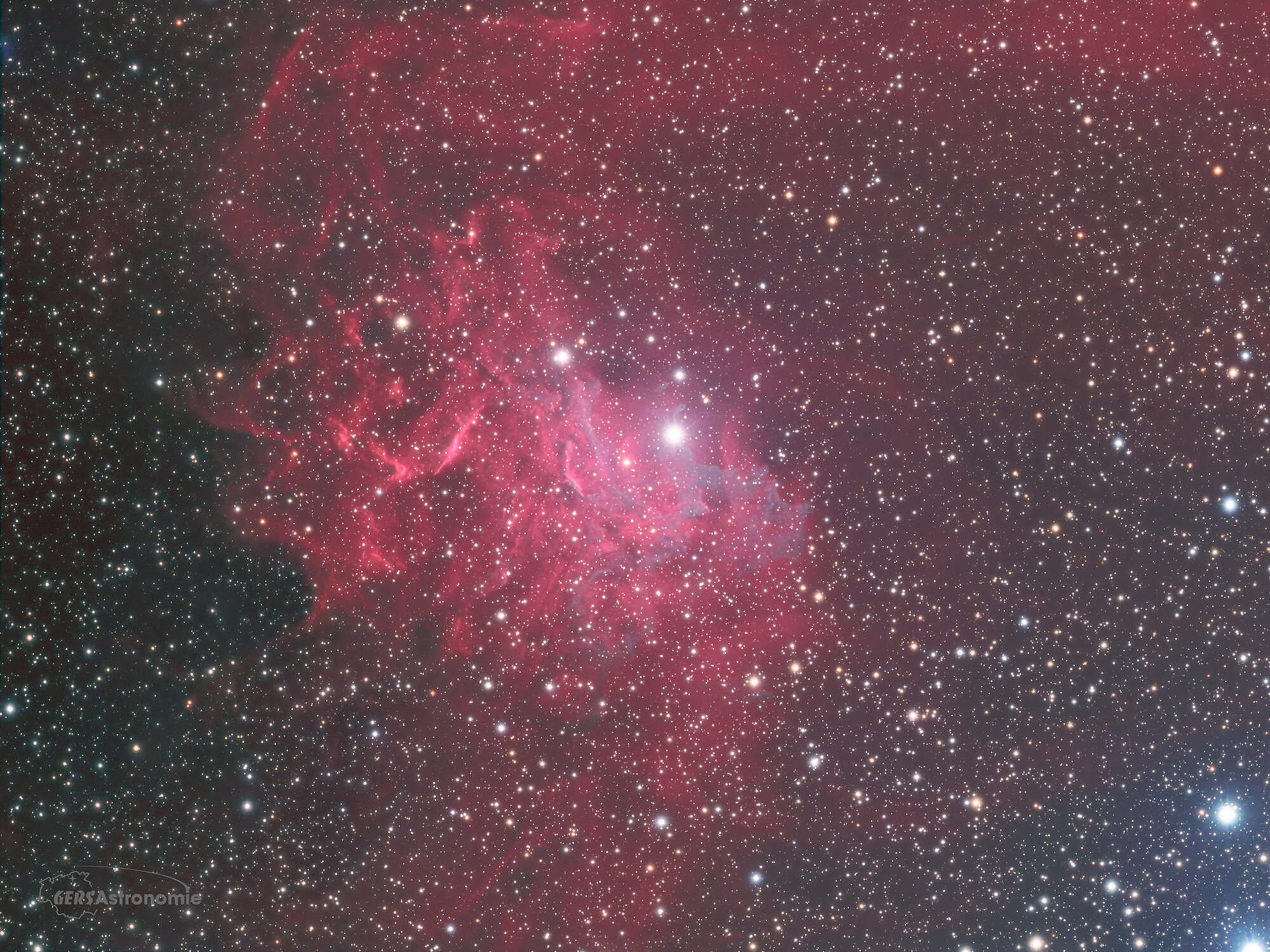IC 405 Flaming Star Nebula
The bright star in the centre of this image, AE Aurigae, an O-type giant, started its life as half of a close binary star system in the region of the Trapezium, in the Orion Nebula, M42. The double star had a near collision with another double star system (which survived and became the spectroscopic binary Iota Orionis) and in consequence the double star was ripped apart, with each component flying off in opposite directions with the orbital speed of this binary system. This speed is enormous: 100 km/s, and in the 2.5 million years since the encounter the separation between the original twin stars is now 1600 light-years. Its original twin is now Mu-Columbae, while the other double star system still lies within Orion. It is only by chance that AE Auriga now lies within a gaseous nebula -- it is racing through it, ionising it and illuminating it as it passes. Both of these characteristics can be seen in this image, with the typical red glow of ionised hydrogen and the greyish tone of the dust which is being illuminated. AE Aurigae is moving in from the south, which is to the right in this image, and seems to be generating shock waves in the nebula.
By the way, it is called the Flaming Star because one of the early photographic images of the area, made by Max Wolf in 1892, appeared to show "enormous curved flames" coming from the star (which one assumes are the illuminated dust visible in this image) and in his paper on the subject he referred to it as a "flaming star". The distance from Earth is uncertain, but is between 1000 and 2000 light-years.
Where it is in the sky:
Best seen in winter skies, it's in the constellation Auriga, some way south of its principle star, Capella.


